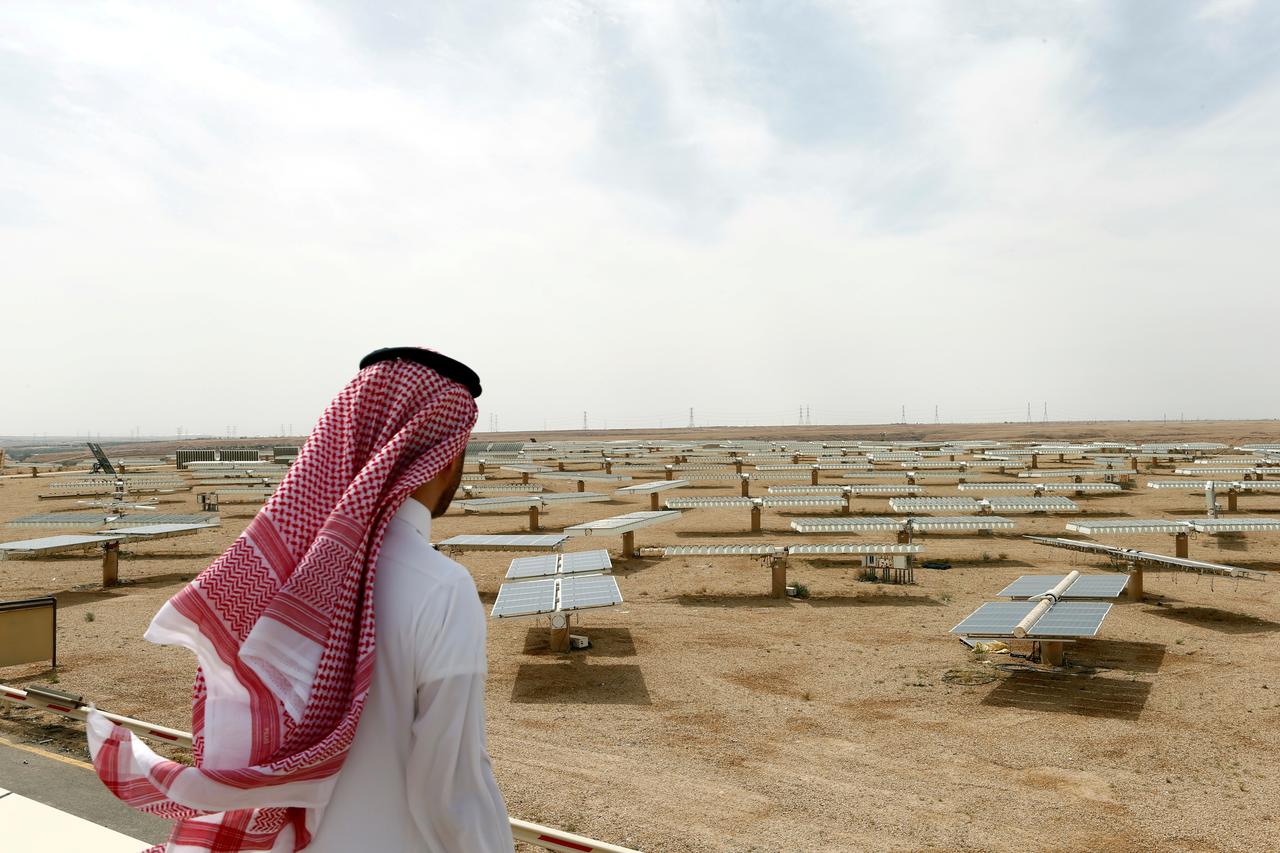The benefits of Saudi Arabia’s renewable energy push
https://arab.news/jzxhv

Energy Minister Prince Abdul Aziz bin Salman on Thursday announced that Saudi Arabia is planning to produce 50 percent of its electricity from renewable sources by 2030.
That is an ambitious goal, implying the considerable scaling up of earlier energy diversification plans and a faster pace of transformation to renewables. It is also ambitious compared to the current use of renewables. Last year, fewer than 2 percent of Saudi households used renewables, mainly solar energy, to meet their electricity needs, according to figures published by the General Authority on Statistics.
In a country rich with conventional fossil fuels, the comparably high cost of renewables has, up to now, made it difficult to wean electricity producers off cheap oil. Although the cost of solar energy has declined dramatically across the world over the past decade, it remains more expensive than oil and gas fuels in Saudi Arabia. This may change. Prince Abdul Aziz said the Kingdom will soon announce a solar energy project that will produce electricity at “the lowest cost per kilowatt… in the world.” When the price of solar energy and other renewables becomes competitive, the switch could take place quickly. Growing awareness among young Saudis of the need to reduce carbon emissions will contribute to that acceleration.
The National Renewable Energy Program, under the Ministry of Energy, oversees the development of renewable energies, primarily solar and wind.
As numerous studies have shown, Saudi Arabia has an obvious comparative advantage in harnessing solar energy in particular, given its vast area and sunny climate. That potential has yet to be fully explored or utilized on a meaningful scale. In 2011, King Abdulaziz City for Science and Technology established a solar energy research station in a small town just north of Riyadh. In the same year, Saudi Arabia also commissioned its first solar power plant on the island of Farasan, off the coast of Jizan in the southwest, with a limited capacity. As the cost of solar energy has decreased by about 90 percent since, Saudis living in areas not reached by the national grid have increasingly utilized solar panels to power their homes and farms, but they only add up to 1.6 percent of all households in Saudi Arabia.
Diversifying the energy mix in Saudi Arabia and other Gulf Cooperation Council (GCC) countries is a strategic decision based on economic, security and environmental considerations. Economically, reducing the country’s reliance on conventional fuels fits well with the diversification plans adopted by all six GCC member states. Diversification plans are underway and they are precisely meant to address these challenges. They imply several meanings, all of which are priorities.
First, economic diversification aims at increasing the share of non-oil goods and services in the gross domestic product. Second, government revenue diversification seeks to develop non-oil and gas sources, such as taxes and returns for non-oil and gas investment. Taxation in itself is a challenge and needs to be calibrated economically and politically, because it is somewhat new and could have contractionary effects on the economy. Third, export mix diversification means encouraging non-oil exports and setting realistic targets for raising the share of non-oil exports to end the current dominance of oil and gas exports. Fourth, energy diversification is pursued to increase the contribution of renewables in the mix of energy sources.
From a security perspective, renewables are less vulnerable to disruption than oil and gas. Dispersed and decentralized, they are less vulnerable to sabotage, such as the attacks in 2019 by the Islamic Revolutionary Guard Corps and its proxies against oil facilities in Saudi Arabia.
Environmentally, increasing the contribution of renewables to the energy mix helps GCC countries meet global climate change commitments
Given the great potential that Saudi Arabia and its GCC neighbors have for producing solar energy, they should be able to export it in the future. They already have the infrastructure to export electricity via the GCC Interconnection Authority (GCCIA), based in Dammam. This integrated grid is owned and operated by the six GCC member states and provides a common market for electricity. It is now exploring opportunities to connect other countries to its network. The project of connecting Iraq has reached an advanced stage. Last year, the GCCIA also signed an agreement with Jordan and Egypt to explore connecting them to the network. The integrated pool of electricity could be contributed to by any connected country and from any source. Economies of scale provided by this project should make the price of renewables more competitive.
When the price of solar energy and other renewables becomes competitive, the switch could take place quickly.
Abdel Aziz Aluwaisheg
While solar energy is the most obvious choice presently, Saudi Arabia also has considerable potential in wind and other types of renewable power production. According to recent research, the Kingdom could become a regional heavyweight in wind power during the coming two decades. According to one estimate, it has the potential to build more than 6 gigawatts of wind capacity, or 45 percent of the region’s total wind capacity addition, by 2030. A number of wind power projects are being undertaken in northern Saudi Arabia, in Sakaka, Dumat Al-Jandal and elsewhere.
When these solar and wind power projects come on stream, they will contribute to regional energy security, while also helping Saudi Arabia diversify its economy, exports and sources of income.
- Abdel Aziz Aluwaisheg is the Gulf Cooperation Council’s assistant secretary-general for political affairs and negotiation, and a columnist for Arab News. The views expressed in this piece are personal and do not necessarily represent those of the GCC. Twitter: @abuhamad1










































